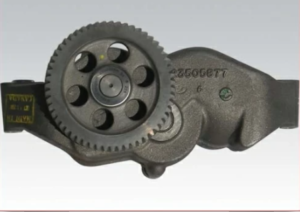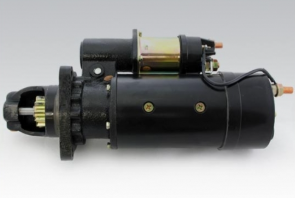Preventive Maintenance Checklists
Preventive maintenance (PM) is critical for ensuring the reliability, efficiency, and longevity of Detroit Diesel Series 60 engines. A systematic approach to inspections, adjustments, and replacements helps prevent unexpected breakdowns and costly repairs. These checklists cover daily, weekly, and long-term maintenance tasks.
Parts Catalog for 11.1L Detroit Diesel 60 Series Marine Engine
Parts Catalog for 12.7L Detroit Diesel 60 Series Marine Engine
Parts Catalog for 14L Detroit Diesel 60 Series Marine Engine
Key Elements of Preventive Maintenance
- Routine Inspections: Identifying minor issues before they become major problems.
- Scheduled Replacements: Ensuring components like filters, belts, and fluids are replaced at optimal intervals.
- Performance Monitoring: Using diagnostics to track engine health and efficiency.
Comprehensive Preventive Maintenance Checklist

- Fluids:
- Check oil level and quality. Refill or replace as needed.
- Inspect coolant levels and ensure proper antifreeze mixture.
- Verify hydraulic fluid levels (if applicable).
- Filters:
- Inspect air, fuel, and oil filters for debris or clogs. Replace as necessary.
- Inspect air, fuel, and oil filters for debris or clogs. Replace as necessary.
- Belts and Hoses:
- Look for cracks, fraying, or leaks in belts and hoses.
- Verify proper belt tension to prevent slippage.
- Electrical:
- Test battery voltage and clean terminals.
- Check for loose or damaged wiring connections.
- Miscellaneous:
- Ensure exhaust systems are free from blockages.
- Inspect for signs of leaks in fuel, coolant, or oil systems.
By adhering to these checklists, you can maintain optimal engine performance and avoid downtime.
Daily and Weekly Inspection Routines
Regular inspections are the cornerstone of a robust maintenance program. These routines allow operators to catch issues early, minimizing the risk of costly failures.
Daily Inspections

Daily checks are essential for detecting immediate issues that may affect engine performance during operation. Conduct these inspections before starting the engine:
- Visual Check:
- Look for fluid leaks under the engine.
- Inspect the engine bay for loose or damaged components.
- Fluid Levels:
- Verify engine oil, coolant, and fuel levels.
- Check for contamination in fluids (e.g., milky oil indicating coolant leaks).
- Battery:
- Ensure proper voltage (12-14V) and check connections for corrosion.
- Ensure proper voltage (12-14V) and check connections for corrosion.
- Belts and Hoses:
- Look for visible wear or signs of failure.
- Look for visible wear or signs of failure.
- Indicators:
- Ensure all dashboard warning lights extinguish after startup.
- Ensure all dashboard warning lights extinguish after startup.
Weekly Inspections

Weekly inspections involve more detailed checks and can help identify developing issues. Perform these checks in addition to the daily routine:
- Air Intake:
- Inspect the air filter for excessive dirt or damage.
- Ensure unobstructed air passages.
- Exhaust:
- Look for soot buildup or leaks in the exhaust manifold.
- Look for soot buildup or leaks in the exhaust manifold.
- Cooling System:
- Inspect the radiator fins for debris and clean if necessary.
- Check for signs of overheating, such as coolant stains or reduced coolant levels.
- Engine Mounts:
- Examine mounts for cracks, wear, or improper alignment.
- Examine mounts for cracks, wear, or improper alignment.
- Diagnostic Scan:
- Use a DDEC diagnostic tool to check for stored fault codes or performance anomalies.
Regular completion of these routines helps maintain optimal performance and minimizes long-term wear and tear.
Long-Term Storage Preparation and Reactivation
Proper preparation for long-term storage ensures the Series 60 engine remains in good condition, even during extended periods of inactivity. Reactivation steps are equally important to restore the engine to operational readiness without risking damage.
Long-Term Storage Preparation
When storing an engine for extended periods, it is essential to protect it from environmental factors like humidity, corrosion, and temperature extremes.
Steps for Storage Preparation:
- Clean the Engine:
- Wash the exterior to remove dirt and grease.
- Clean intake and exhaust openings to prevent debris buildup.
- Drain Fluids:
- Remove all fuel from the system to prevent varnish formation.
- Drain coolant if freezing temperatures are expected or use an antifreeze mixture rated for storage.
- Apply Protective Coatings:
- Spray fogging oil into the intake manifold and combustion chambers to prevent rust.
- Coat exposed metal surfaces with anti-corrosion spray.
- Seal Openings:
- Cover intake, exhaust, and other exposed openings with plastic caps or tape to prevent moisture and debris entry.
- Cover intake, exhaust, and other exposed openings with plastic caps or tape to prevent moisture and debris entry.
- Disconnect Electrical Components:
- Remove the battery and store it in a cool, dry place. Keep terminals coated with dielectric grease.
- Remove the battery and store it in a cool, dry place. Keep terminals coated with dielectric grease.
- Inspect and Document:
- Perform a full inspection and document the engine’s condition before storage for reference during reactivation.
- Perform a full inspection and document the engine’s condition before storage for reference during reactivation.
Reactivation After Storage
When returning an engine to service, a systematic approach prevents damage and ensures a smooth start.
Steps for Reactivation:
- Inspect the Engine:
- Remove protective covers and inspect for signs of corrosion or pests.
- Remove protective covers and inspect for signs of corrosion or pests.
- Refill Fluids:
- Refill with fresh fuel, oil, and coolant.
- Bleed the fuel system to remove air pockets.
- Rotate the Engine:
- Manually rotate the crankshaft to ensure free movement and lubrication.
- Manually rotate the crankshaft to ensure free movement and lubrication.
- Reconnect Electrical Components:
- Reinstall the battery and check connections.
- Reinstall the battery and check connections.
- Initial Startup:
- Start the engine and let it idle for a few minutes to circulate fluids and check for leaks.
- Start the engine and let it idle for a few minutes to circulate fluids and check for leaks.
- Post-Startup Check:
- Monitor vital signs like oil pressure, coolant temperature, and fuel delivery during the first operational hours.
- Address any anomalies immediately.
By following these preparation and reactivation steps, the Series 60 engine can be stored safely and brought back to operational condition without unnecessary wear or damage.
Conclusion
Adhering to a robust maintenance schedule, performing routine inspections, and taking proper precautions for long-term storage can extend the life of Detroit Diesel Series 60 engines. These practices ensure reliability, reduce downtime, and safeguard your investment in this highly regarded powerplant.
Parts Catalog for 11.1L Detroit Diesel 60 Series Marine Engine
Parts Catalog for 12.7L Detroit Diesel 60 Series Marine Engine
Parts Catalog for 14L Detroit Diesel 60 Series Marine Engine



 Free US Calls: 1-888-433-4735
Free US Calls: 1-888-433-4735 International: 305-545-5588
International: 305-545-5588
One response to “Maintenance Schedules and Best Practices For Detroit Diesel Series 60 Engines (11.1L, 12.7L, 14L)”